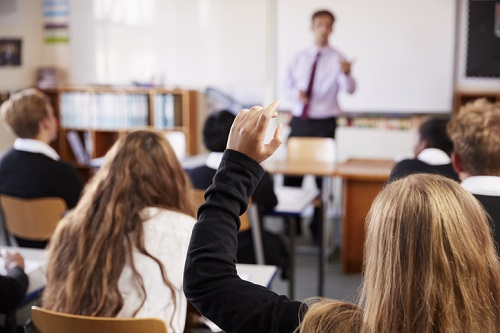
New Australian research has examined almost 3,000 high school students from Years 8 to 12 to discover why the aggressive rule breakers – or rebels – are so well-liked by their peers .
The Australian Catholic University’s (ACU) Institute for Positive Psychology and Education Professor Joseph Ciarrochi was the lead researcher on ‘The upsides and downsides of darkness’ paper recently published in the international journal, Frontiers in Psychology.
His work found that while the rebel teens were popular with the opposite sex in junior high, it was the nice kids who, by Year 12, came out on top in terms of all-round popularity.
“When examining the key to building strong social networks, society sometimes offers an intuitively appealing position such as, ‘We need to be nice to others, cooperate, support, empathise and give to others,” Professor Ciarrochi said.
“But, if this is correct, why are so many antisocial behaviours also popular?”
To answer the question, the research classified the high school students into four types: Nice kids are high in empathy and low in antisocial behaviour (aggression, breaking rules); Rebels show the opposite pattern and lack empathy; ‘nice rebels” are both empathic and antisocial, and finally ‘non-players’ use neither strategy.
The research categorised the young people into four main groups:
Nice
Long-term, nice kids are best at building close friendships and developing well-being. Short-term, they may lose out to more antisocial kids, who may be seen as cool, fun, and charming. They may also sacrifice their time to help others, and this may have short term costs. But the long-term benefits are lasting alliances and friendship.
Antisocial or “rebel”
Short-term, the opposite sex notices antisocial kids and sees them as fun, charming, and dominant. Their lack of empathy may make them less upset when they hurt others. Still, there is a price. Antisocial youth have the lowest well-being, perhaps because they do not build authentic, supportive friendships.
Nice antisocial or “nice rebel”
These kids may get the best of both worlds initially. They can be empathic when they want to work with the group, and aggressive when they want to go against the group. Their empathy may also make them skillful at using aggression and knowing just how to hurt people. The cost is that they have lower well-being, and people do eventually seem to figure them out and start to defriend them in senior school.
Non-players
The non-player kids don’t use aggression or empathy as a social strategy. As a result, they were fairly invisible to the opposite sex. They receive the fewest opposite-sex friendship nominations of all groups. They do have higher well-being than both types of antisocial kid. Thus, “not playing” is better for your mental health than playing aggressively, that is, in a way intended to hurt.
“I would not tell young people they belong to either category. Telling them such a thing may make them believe they cannot change,” Professor Ciarrochi recommended,
“We all can, and do, change, though not always for the better. Parents and teachers can help a young person to notice they use certain strategies and help them to see the consequences of those strategies, both short-term and long-term.”


